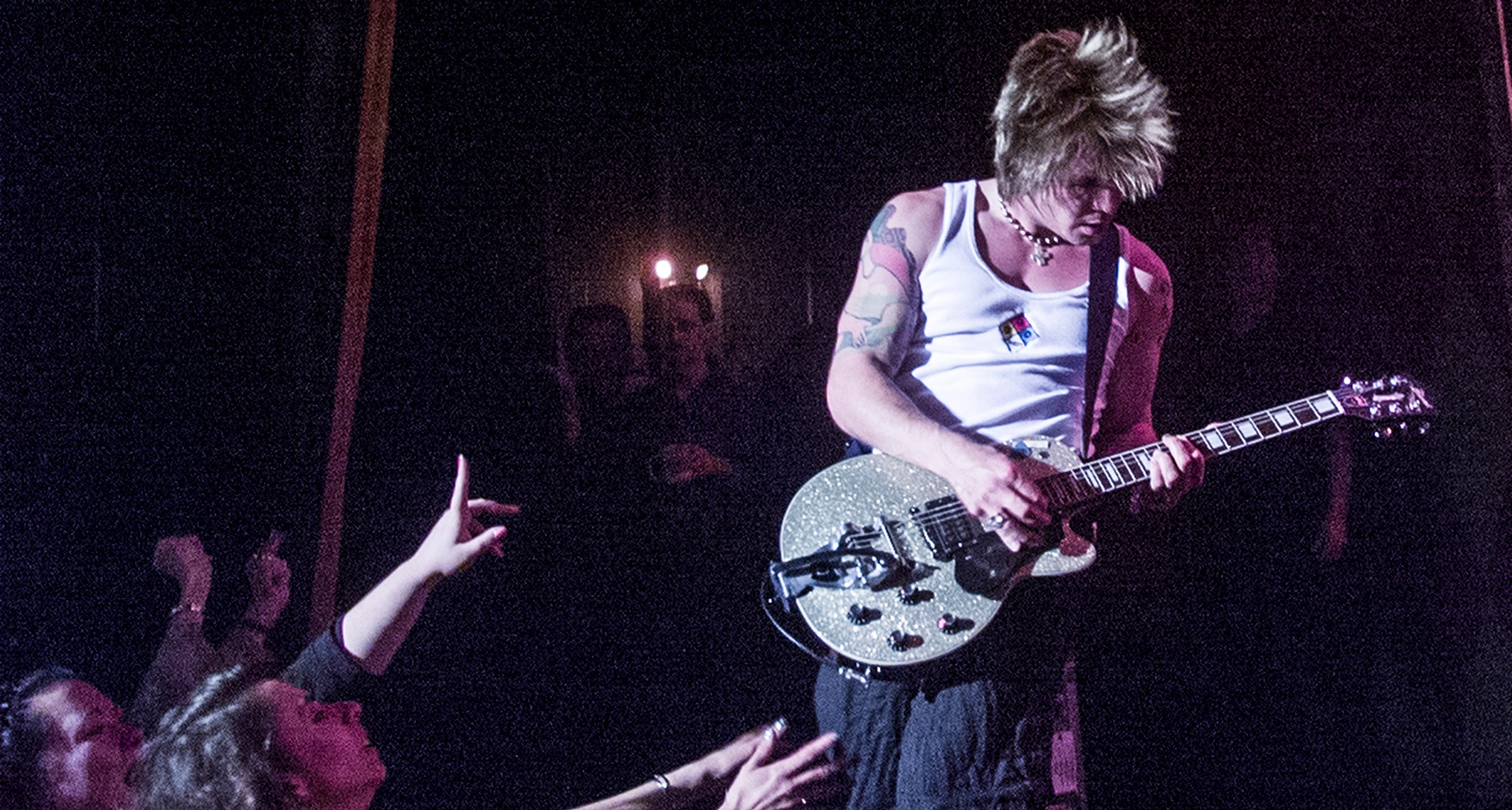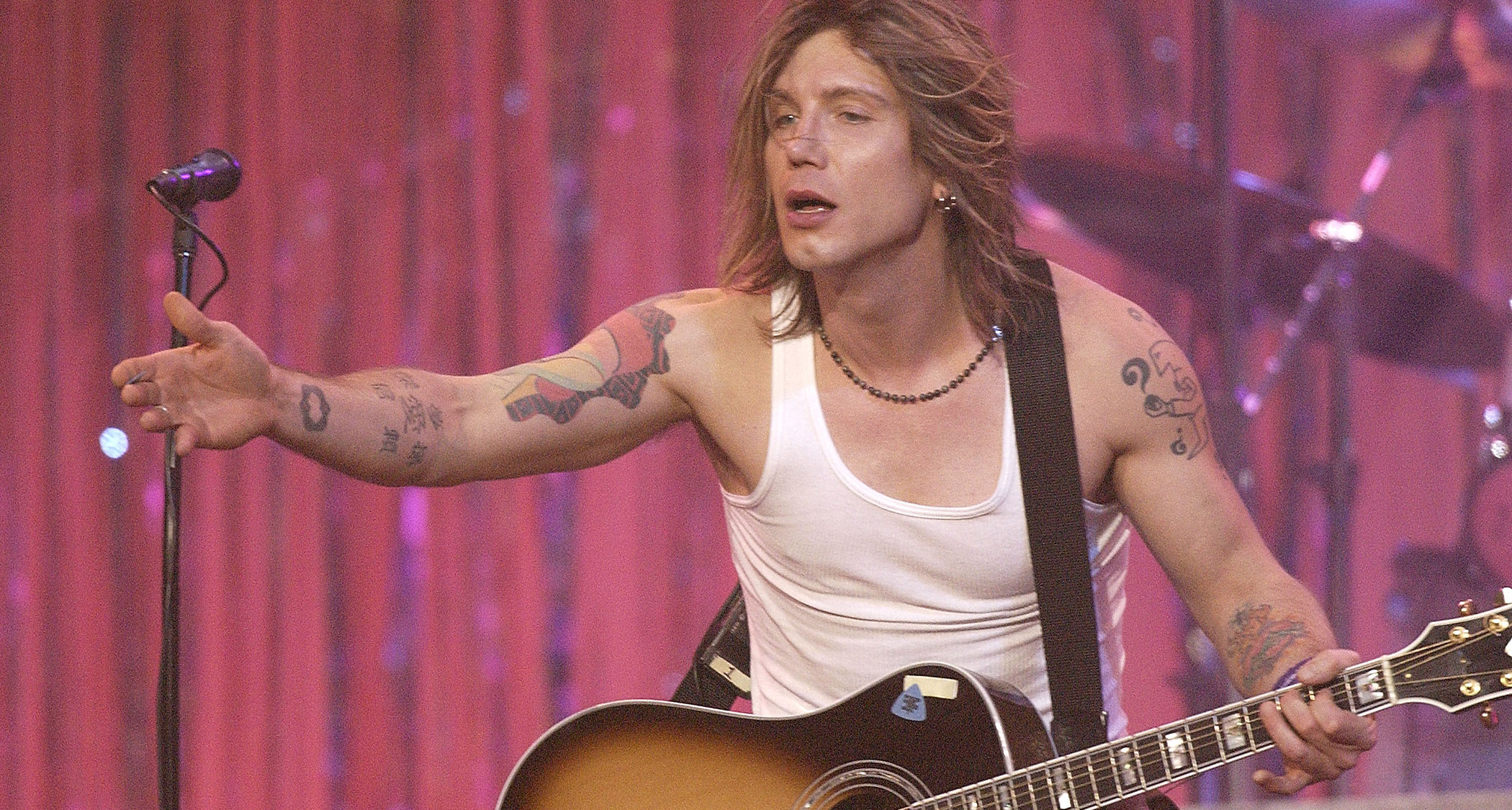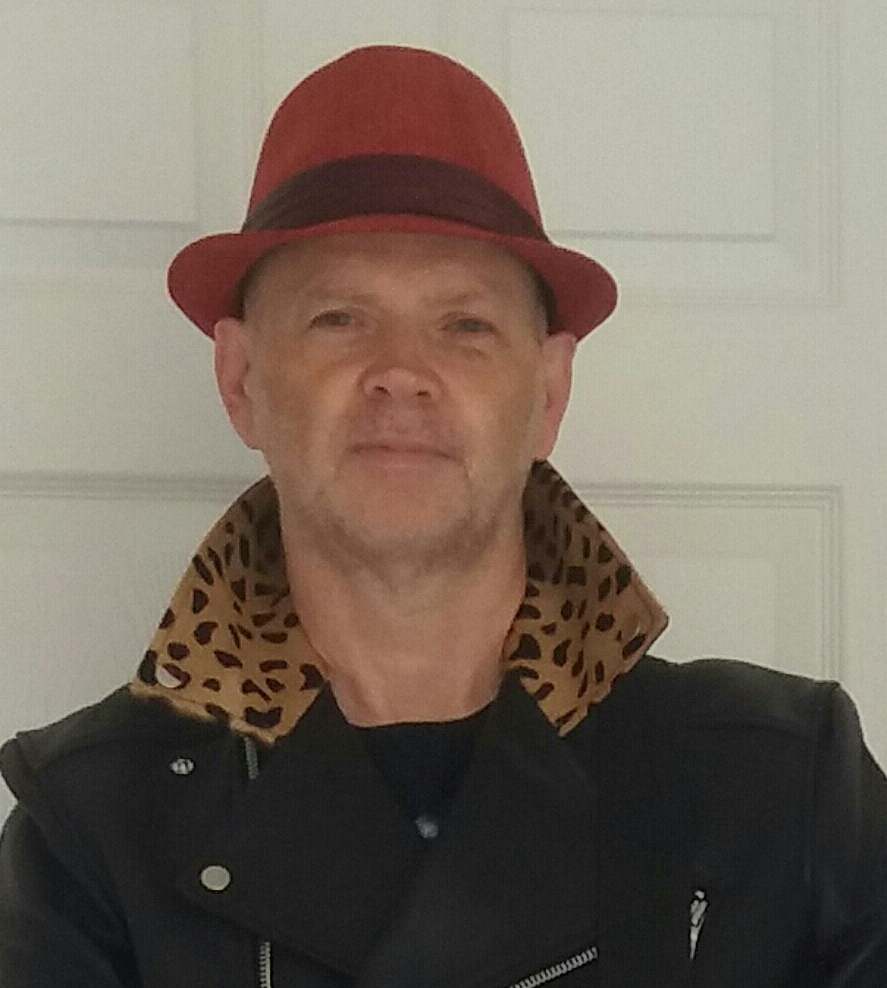“I remember thinking if you’re not careful with what you use, it will sound dated in 10 years. For my first album, I used a Rockman, which makes me cringe now”: Goo Goo Dolls’ John Rzeznik on the legacy of Iris, Dizzy Up the Girl and those weird tunings
When Rzeznik and co set out with Goo Goo Dolls there was no Plan B. They were all in. But when it came time for album number two, that gamble was about to pay off in a big way…

With the release of Dizzy Up the Girl in 1998, Goo Goo Dolls completed the transition from indie favorites to mainstream rock monsters.
They’d already experienced chart success with their previous album, 1995’s A Boy Named Goo, boosted by the unexpected success of Name, which saw them enter the singles chart for the first time, peaking at Number 5. But the success of Boy paled in comparison to Dizzy, which spawned four hits, including radio favorite Iris.
Singer/guitarist John Rzeznik remembers the change in the band’s status and is understandably unapologetic for the alienation of some of the band’s early fans.
“We’d got used to our underground cult status,” he says. “Once the record broke big, our hipster fanbase basically said, ‘fuck you’ to us. [Laughs] We had to just think, whatever, you know? We were always grateful that we were able to get out to a much bigger audience.
“When you come up from the underground DIY punk scene, those people shit all over you if you dare to break out of that niche. We took a lot of shit for succeeding. We lost a few friends, but we made a lot more new ones.”
When the album came out, it marked a subtle shift in direction from the previous record, A Boy Named Goo. But, of course, compared to your first album, 1987’s Goo Goo Dolls, it was profoundly different.
“There was no conscious decision on our part where we thought, 'now we need a hit' or something. I think we basically made the same kind of record we always made; we always had some ballads on the albums, for instance. That’s really a product of the albums I grew up listening to, which would mix fast rock songs with slower songs or whatever.
Get The Pick Newsletter
All the latest guitar news, interviews, lessons, reviews, deals and more, direct to your inbox!
“To someone on the outside of the process, things look like a leap, but it takes six months to write and record an album. I made the first album when I was 21 and Dizzy was done nearly 10 years later; obviously you change and grow as you get older. My tastes changed, and it would have been foolish for me to still be doing what I did from 10 years earlier.”
The overall feel of the album is very optimistic. Is that a reflection of how you were feeling as a band?
“I think so. It felt like we were in the last days of acting like children, as the last album had done very well and there was some pressure to match its success. But then I said to myself that I have no control over what would happen once it was released, so I freed myself up to write whatever I wanted.”
If we thought the ideas were a little ‘out there’ for us as a band, we could think to ourselves that it was the producer’s idea
Was it a smooth recording process, given that you already had five albums under your belts?
“We spent a lot of time in pre-production. You shouldn’t be burning through a ton of money experimenting in the studio. This was the first album where we had a good budget and a real producer, Rob Cavallo, and those things definitely impacted on what we thought we could achieve.
“That meant we knew the basics of exactly what we would be doing, with the proviso that we’d be able to then develop and expand our ideas. He’d make suggestions as we went along, and they were always great, so we were happy to go along with what he came up with.
“If we thought the ideas were a little ‘out there’ for us as a band, we could think to ourselves that it was the producer’s idea. [Laughs] We spent a couple of months in total, including all the production work, etc. Jack Puig, who was mixing, spent up to three days on some of the tracks.”
Was there much recorded that didn’t make the cut?
“I’m a brutal editor, and before anything ever gets into the studio as contenders, I edit most of it out. I never think I’ll record everything and save stuff for B-sides or whatever. If it doesn’t excite me, why bother recording or releasing it? I know guys who’ll sneeze into their iPhone and release it because they’re so sure that everything they do is brilliant. [Laughs]”
I know guys who’ll sneeze into their iPhone and release it because they’re so sure that everything they do is brilliant
Iris became a huge hit and is one of those songs everybody knows – even though they don’t necessarily know who recorded it. Was it obvious it was going to be a major song for you when you were recording it?
“When I was making the demos, I was putting the string parts on with a synth, but the way that Rob Cavallo took the song and brought in a really powerful string section – that was a major shift. It’s a really long song, but it was written specifically for a film [1998’s City of Angels], so I had my subject matter in front of me.
“Robby [Takac, bass player] and me – we were nervous as we watched the string section come in and start tracking. We were saying we were turning a corner, and did we want to go back? We just decided to say fuck it; we knew the song was undeniable. I’m glad we made that decision.
“Tim Pierce [ace session guitarist] worked on that with us. I could never play his parts; he’s a tone architect, a great ambient player. He knows how to weave around a song and insert little spots of sonic candy. He plays those long, sustaining slide parts.”
All Eyes on Me has a fairly epic solo. Would you have worked that out or just played it off-the-cuff?
“It’s a bit of both. I’d make everyone, except the engineer, leave before I did my solos. I’m not a real skilled technician, so I’d just sit there and try ideas, keeping the ones that worked.
“The idea was that there would be a beginning, middle and end, so the final result would be the product of trying a number of different approaches. In effect, it’s using the studio as another instrument, really, with the creative options that it offers.”

What guitars and guitar amps did you use on the album?
“We did the album in Los Angeles, and I didn’t have very much gear that was real top-drawer stuff at that point, so we rented a lot of equipment from Lon Cohen Rentals [LCSR Backline], who are based in L.A. They have the most amazing gear.
“I rented a couple of Marshalls; the 50-watt JMP is the pinnacle of the Marshall rock ’n’ roll tone. I had a Plexi, but it was so loud you couldn’t record with it.
“I also rented a Bogner and a Fender Bassman. Nowadays I record with tiny combos, but I do have a pristine old 50-watt Hiwatt head and an old, original 4x12 cabinet with Fane speakers that sounds like god. [Laughs]
“I also rented a magical Gibson J-200 and a Gretsch Country Gentleman, an incredible guitar. I owned a Les Paul with mini-humbuckers at that time, which I loved. I think that’s the best Les Paul tone; it’s not as dense and there’s a little more cut.”
What did you start out on?
“My mom bought me a guitar for $40 when I was in the eighth grade, a Kay SG copy. It had these foil pickups; I guess it was a piece-of-crap guitar, really, but it was something, and it meant a lot to me. The first decent guitar I got was an ESP Strat-style guitar with a humbucker at the bridge.
“That was actually my only guitar when we first started to go on tour. We hired a guitar tech and asked him to bring a guitar as well as a backup. [Laughs] When we started to make some good money, I got an ES-335. I now have a decent collection of vintage gear that I never take on the road.”
It’s a bit weird, as with each different tuning you have to almost re-learn how to play a little bit
You’re known for playing in a lot of unusual tunings that you invented yourself. What was the thinking behind that?
“It came from necessity, as I wanted to create a big sound and to have strings that would drone, to help fill out the sound of us as a three-piece. I first started experimenting with a guitar that I fitted a Hipshot on, which dropped the low E to D, then I had banjo tuners on the B that raised it to C and another that raised the top E to F#.
“That opened up the world to open tunings and expanded everything. It’s a bit weird, as with each different tuning you have to almost re-learn how to play a little bit. I’m currently taking 28 guitars on the road, which gives me the scope to cover every tuning.”
Who were the people that influenced you and made you want to play?
“Mick Jones and Joe Strummer from the Clash. The first music I could play by ear, just from listening to the records, was the Ramones. That was a ‘wow’ moment for me to make me think that maybe I could have a band and write some songs.
“I loved Robert Smith from the Cure and Will Sergeant from Echo & the Bunnymen, plus Andy Summers and Mark Knopfler. Bob Mould was a particular influence; the things he did with Hüsker Dü, the beauty he created from such a dense sonic noise.”
When you look back at the album, how do you view it?
“I always look back and think if I’d done this or that it’d have been so much better. I remember thinking to myself back then that if you’re not careful with what you use, it’s going to sound really dated in 10 years.
I was in the studio just the other day working on new material, which will probably come out in 2025. I still get incredibly excited by making new music
“For my first album, the guy talked me into using a Rockman, which just makes me cringe when I hear it now. I always say stick with the classic tones that never go out of style, which is one of the reasons I think the record still holds up.”
What’s coming up for the band?
“We’re all still hungry. Any kid that picks up a guitar and plays in front of a mirror wants to be a rock star – we all think big when we start out. We never had a plan B, we just worked real hard, and we were incredibly lucky. I never take anything for granted.
“I was in the studio just the other day working on new material, which will probably come out in 2025. I still get incredibly excited by making new music and then getting the chance to take it out live and seeing how our fans respond. What could be better?”
Mark is a freelance writer with particular expertise in the fields of ‘70s glam, punk, rockabilly and classic ‘50s rock and roll. He sings and plays guitar in his own musical project, Star Studded Sham, which has been described as sounding like the hits of T. Rex and Slade as played by Johnny Thunders. He had several indie hits with his band, Private Sector and has worked with a host of UK punk luminaries. Mark also presents themed radio shows for Generating Steam Heat. He has just completed his first novel, The Bulletproof Truth, and is currently working on the sequel.
“The main acoustic is a $100 Fender – the strings were super-old and dusty. We hate new strings!” Meet Great Grandpa, the unpredictable indie rockers making epic anthems with cheap acoustics – and recording guitars like a Queens of the Stone Age drummer
“You can almost hear the music in your head when looking at these photos”: How legendary photographer Jim Marshall captured the essence of the Grateful Dead and documented the rise of the ultimate jam band
![Goo Goo Dolls – Iris [Official Music Video] [4K Remaster] - YouTube](https://img.youtube.com/vi/NdYWuo9OFAw/maxresdefault.jpg)


![Goo Goo Dolls - Name [Official Music Video] - YouTube](https://img.youtube.com/vi/yQOBUrRaPU0/maxresdefault.jpg)











